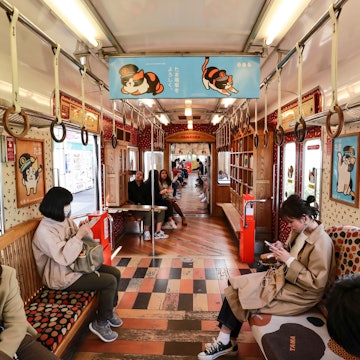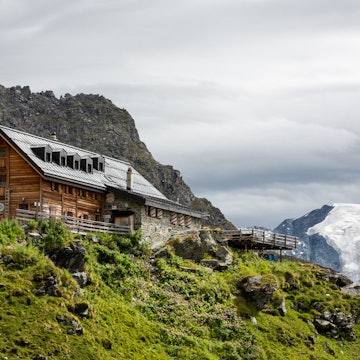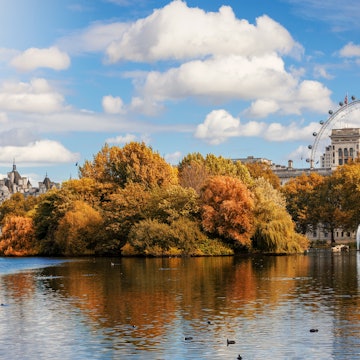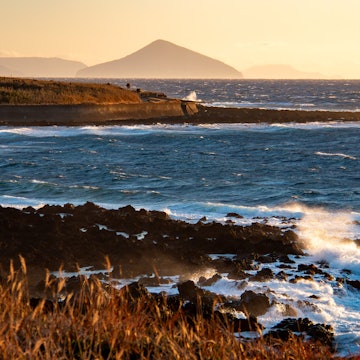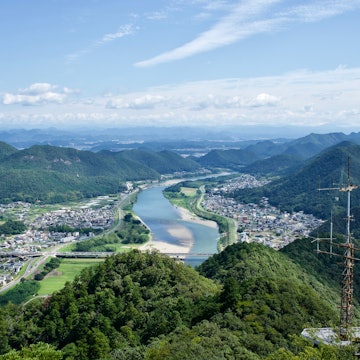

Plan your trip to Kyoto with these tips on packing, where to stay and etiquette. Rintaro Kanemoto for Lonely Planet
Kyoto is the embodiment of traditional Japanese culture. It's a place where authentic crafts are kept alive and historic temples and teahouses line the narrow streets. It’s also a destination where etiquette has a big part to play in how you experience the city.
Be ready for your visit to Kyoto with this rundown of some key things to know before you go. We cover everything from what to pack for temple visits to how to stay safe and how much to tip.
1. Plan your visit with the seasons
Kyoto is a very seasonal destination, so plan your trip accordingly. The spring hanami (cherry-blossom) season (late March to early April) is when the city is at its most photogenic, but also its busiest. If you want to visit during this time, you’ll need to book accommodations a year or more in advance and expect to pay premium prices. The same is true of the fall foliage season (late October to early December), although not to quite the same degree. Summer (June to August) sees the streets come to life with festivals, while winter is the quietest time in Kyoto. New Year is a big holiday in Japan, with many shops, restaurants, museums and other businesses closing between December 29 and January 3.

2. Where to stay in Kyoto for first-time visitors
Kyoto has plenty of great neighborhoods to choose from, but southern Higashiyama and downtown Kyoto are among the most convenient for sightseeing. In terms of accommodations, you can find everything from budget guesthouses to high-end international hotels. For a more authentic Japanese experience, consider spending a night in a ryokan inn, where you’ll sleep on futons on tatami mat floors with traditional meals served in your room.
3. How to get to Kyoto from the airport
The main airports for Kyoto are in Osaka (Kyoto doesn't have it's own airport). For international passengers you'll land in Kansai International Airport (KIX), or if you've switched to a domestic flight it may be arriving at Itami Airport (ITM). The journey from KIX to Kyoto takes about 75 minutes via the express train. From ITM, allow about one hour by road. Airport limousine buses and door-to-door shuttles also serve both airports.

4. Pack shoes you can slip on and off with ease
When traveling in Kyoto, you’ll find yourself having to take your shoes on and off frequently, so choose your pairs wisely, and wear nice socks! Outdoor shoes are generally not worn in tatami mat rooms, people’s homes, or traditional temples, restaurants and ryokan inns. You can normally tell when you’re expected to take your shoes off because there will be a raised step where the flooring changes. You’ll see other people’s shoes lined up, and slippers may be set out for you to wear inside. Be aware that there’s usually a separate pair of slippers to wear in the bathroom – don’t forget to swap them back afterward. Think "shoes on stone, socks on wood."
5. Kyoto is best explored on foot
Not only is Kyoto a very walkable city, but navigating its streets on foot also enables you to discover lots of lesser-known but no less impressive spots. From tiny restaurants and bars with counter-seats-only to ancient shops specializing in wagashi sweets, tofu or local crafts, many of Kyoto’s most interesting locations aren’t in obvious places. You might come across picturesque shrines down tiny alleyways, find street stalls serving freshly baked mochi rice cakes or spot a kimono-clad maiko (apprentice geisha).
6. The city can be crowded
Kyoto is home to some of the most famous and beautiful sightseeing spots in Japan and they attract large numbers of domestic and international tourists. Big-name attractions such as Kinkaku-ji temple, the Arashiyama Bamboo Grove and Kiyomizu-dera temple are definitely worth visiting, but time your trip for the early morning or toward the end of the day to avoid the crowds. Similarly, when visiting the endless red torii gates of Fushimi Inari-Taisha shrine, head farther up the mountain to find room to breathe.

7. How to tell a temple from a shrine
Buddhist temples and Shintō shrines were historically intertwined, until they were separated by government decree in 1868. But centuries of coexistence mean the two often resemble each other architecturally. The easiest way to tell them apart is to check the gate. The main entrance of a shrine is a torii (gate) – usually two upright pillars joined at the top by two horizontal crossbars. Torii are often painted bright vermilion. In contrast, the mon (main entrance gate) of a temple is constructed of several pillars or casements, joined at the top by a multitiered roof. Mon often contain guardian figures, usually Niō (deva kings).
8. Don't miss these experiences too
Kyoto is the spiritual heart of Japan, and with some 2000 temples and shrines to explore, you’d be forgiven for thinking that’s all the city has to offer. But there’s so much more to discover. Head to Nishiki Market to sample top local cuisine, take an evening stroll around the atmospheric streets of Gion and admire the mighty Nijō-jō castle. Kyoto also has a wealth of prestigious museums to discover, plus pleasant parks and serene walking paths.

9. Give yourself time to explore beyond the city
You could easily spend your entire trip in Kyoto city, but if you have time, broaden your itinerary to include day trips to other parts of the region. The surrounding prefecture has fantastic hiking routes within easy reach that let you experience the area’s stunning natural scenery, as well as quieter temples such as Kurama-dera and Enryaku-ji. Smaller towns, such as coastal Kinosaki Onsen and green tea-loving Uji, are also great for a day out.
10. Mind your manners in Japan
Politeness is hugely important in Japanese society. Although tourists will be forgiven the occasional etiquette breach, it’s always best to be courteous. That means not talking too loudly on public transport, avoiding eating on the sidewalk and allowing room for others to pass on the narrow streets. Littering and cutting in line are seen as particularly rude. Smokers should take care to use the designated smoking areas, and many parts of the city are now no-smoking zones.

11. Follow the signs for Kyoto temple etiquette
There is no special dress code required for visiting temples in Kyoto, just dress in a respectful manner as you would any religious site. Hats are removed before entering a building and do not take photos inside. Follow the on-site etiquette instructions, or do as others are doing, when visiting the shrines. For example clean your hands at the purification fountain, and bow as a sign of respect when passing underneath torii.
12. Pay in cash – don't leave a tip
Tipping isn’t customary in Japan, and in fact, it can be seen as insulting. If you attempt to leave a tip, it will almost definitely be declined. As a side note, in most restaurants, you pay up at the front counter rather than at your table. Cash is far more commonly used than card payment, and you should place your money in the small tray provided rather than hand it directly to the cashier (this goes for shops, hotels and other locations, too). They will place your change in the same tray for you to pick up once the transaction is complete.
13. Geisha (geiko) are not a tourist attraction
Lots of people hope to spot geisha – or geiko as they’re known in Kyoto – when visiting the historic Gion district. However, it’s important to be respectful when doing so. Any geiko you see will probably be on their way to an appointment and won’t appreciate being swarmed by strangers! Ask politely if it’s okay to take a photograph, rather than behaving like paparazzi.

14. Kyoto is an extremely safe city
Crime rates in Kyoto are low, the tap water is clean, and if you lose something, it will almost certainly be returned to you. It’s safe to walk the streets at night, even as a solo traveler, and the city is welcoming to LGBTIQ+ visitors. Of course, you should still exercise common sense during your stay and take the normal precautions that you would at home. If you need help, you’ll find police boxes (known as kōban) on most intersections, although the police inside might not speak much English.
15. Earthquakes are common, but serious earthquakes are not
Earthquakes are fairly frequent in Japan; however, most are low-intensity and cause little to no damage. You’ll find instructions in your accommodations about what to do in the unlikely event of a serious quake.

16. Watch out for bikes on sidewalks
Cycling is common in Kyoto, and it’s a convenient way to get around the city. Many people ride on the sidewalk, so keep an eye out when you’re walking or leaving shops and restaurants. If you hear a bell, someone behind you is probably trying to get past.
17. In a medical emergency, dial 119
In a medical emergency, dial 119 for the ambulance service (this is also the number for the fire department). Medical care in Kyoto is reasonably priced and of a high standard, although it is always advisable to take out travel insurance before your trip to ensure that you can receive treatment at a hospital or clinic should you need it. Police can be reached by dialing 110.









